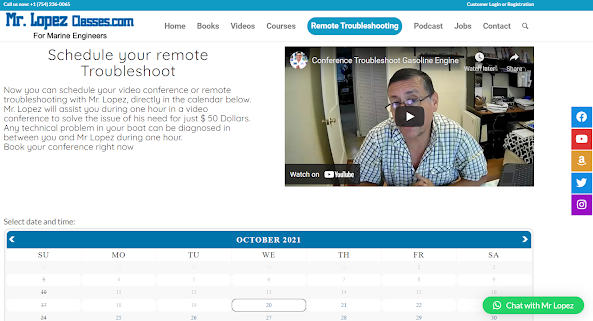How to install a Marine Generator
How to install a Marine Generator
To Install a new generator successfully follow these steps:
1.- Size the capacity of the generator in Kw according to the capacity of the AC Panel in Kw, plus 20% for the safety factor.
2.- Analyze different places in the engine room to install de generator, avoiding:
- Proximity to propellers
- Locations over the waterline (More than 2 feet)
- Long distances in between the trough full valve and the raw water pump.
- Proximity of the exhaust gases pipe with cabin grills (Less than 15 in)
- Excessive separation between the battery and the Genset
3.- Prepare fittings, hoses, and filters to install the fuel system
4.- Prepare Hoses, elbows adapters, and Muffler to install the exhaust system (Take into consideration antisiphon devices and Water separators).
5.- Prepare battery cables. Size those cables according to the distance in between the battery and the starter. Always install a Battery switch selector.
6.- Ask the owner his preference to install the remote panel and pass the harness avoiding proximity with Antenna cables, AC cables, and Lightning conductors.
7.- Design a secure frame to support the Generator motor mounts.
8.- Install the sea strainer and raw water pump always below the waterline.
9.- Verify that the emergency generator shutdown system is connected with the fire suppression system.
10.-Setup the AC output power of the generator according to the AC power of the boat (European 230V 50 Hz or American 120/240V 60 Hz).
11.- Wire the AC output from the generator breaker to the AC switch selector according to the AWG wire gauge.
12.- Connect the generator frame to the boat bonding system.
13.- Start the generator, then apply load starting with light loads finishing with heavy loads always analyzing the generator response (Gain), the voltage, and the frequency.
Troubleshooting Marine Generators
The Generator won't crank
Primarily this is an electric issue with DC current.
This could be due to a blown 12-volt fuse located on the control panel.
The reading on the voltage meter should be over 10.5 VDC.
A fully charged battery will read 12.6 VCD.
You may possibly have a bad control board or the wiring on the connection may be loose.
* No signal on the starter solenoid
* A bad Oil Pressure Switch. In general, this is an NC switch.
* A bad Coolant Temperature Switch. This is an NC switch.
* A bad solenoid valve at the input of the fuel injection pump or no signal coming in at the solenoid valve.
A blown fuse (DC) on the main control box.
A bad Run Relay at the main circuit board or at the main control box for analog generators.
An open Preheat circuit.
In general, it is a mechanical issue at the engine.
Get here the Marine Electricity Handbook where you can find all the information on this and many other topics.
Generator Start but Stop suddenly
- Check oil level
- Check oil pressure gauge
- Check oil temperature gauge
- Verify continuity on fuse panel
- Check seal exchanger cap
- Verify coolant level on the heat exchanger and expansion tank.
- Check water outlet for the exhaust
- Verify temperature on the raw water pump plate
Bleed the system manually and check for the presence of bubbles on the water separator.
Verify if the fuel solenoid is de-energized suddenly (For Diesel engines)
Verify if the Idle solenoid is de-energized suddenly (For Gas carbureted engines)
Verify if the pressure on the common fuel injection rail is according with the manufacturer's recommendations.
Verify grounding conditions on the control box
Check the rotor excitation from the alternator.
Check fuel tank level
Analyze motor oil conditions by visual inspection
- Presence of oil
- Presence of coolant
- Presence of metals
Low Frequency ( UF)
Fuel Supply
- Bad filters
- Bad Injectors
- Fuel contaminated
- Air and Water in the line
Fuel Pump
Fuel Solenoid







Comments
Post a Comment